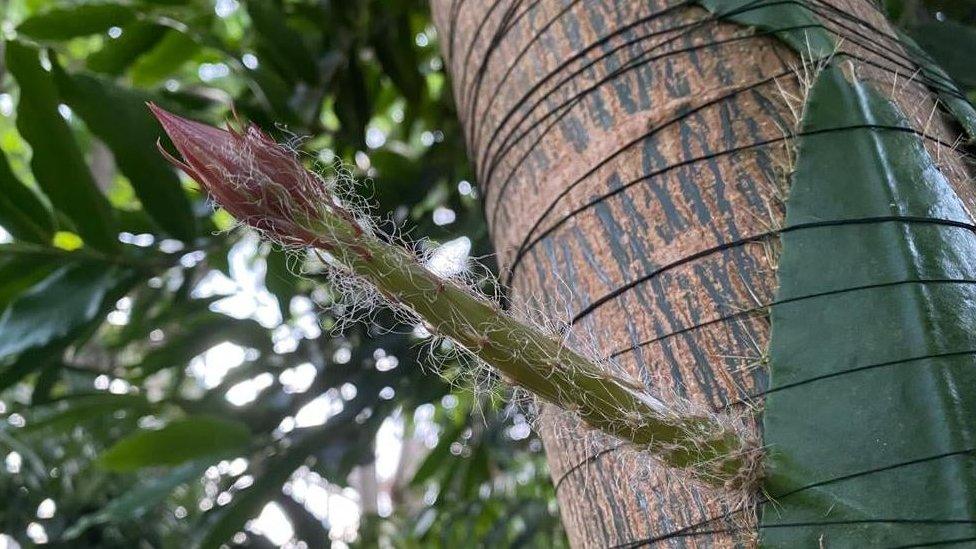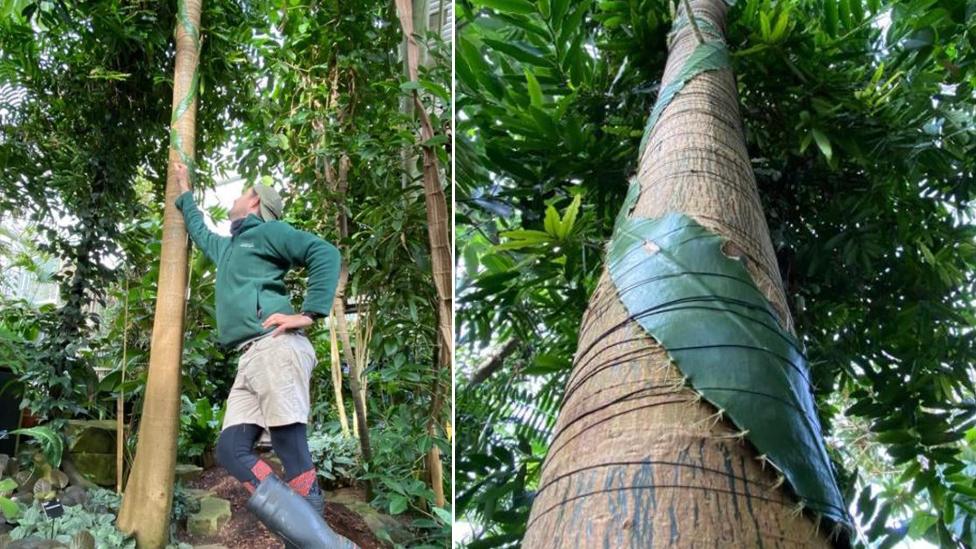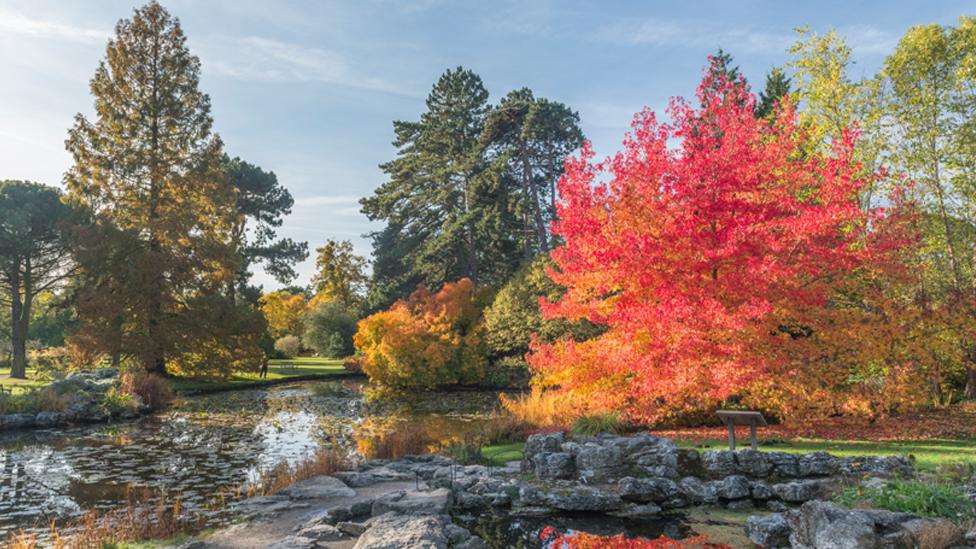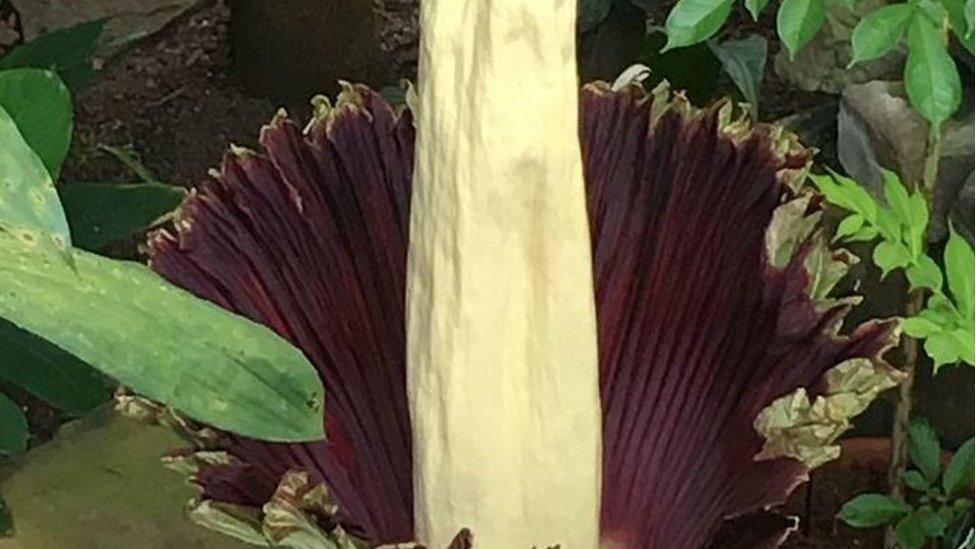'UK first' moonflower to bloom in Cambridge - for 12 hours only
- Published

A live webcam is trained on the flower bud, waiting for it to open
A rare Amazonian cactus is set to bloom for what is believed to be the first time in the UK - but it will only flower once for 12 hours, and then die.
When it makes its appearance, the moonflower at Cambridge University Botanic Garden will only be out between sunset and sunrise.
The plant attaches itself to a tree and climbs up it - this one is 12ft (3.5m) above the ground in a glasshouse.
Staff said they were "intrigued and excited" waiting for it to flower.
The moonflower, Selenicereus wittii, is described by the botanic garden as a "rare and unusual cactus which spirals around tree trunks with leaf-like, flattened stems or pads".
It is native to the Amazon rainforest where it climbs up host trees to escape floodwater at ground level.

When it blooms, the moonflower is expected to look like this
The Cambridge specimen was acquired from Bonn Botanic Garden in Germany in 2015 and attached to a water chestnut tree, but this is the first time it has put out a bud.
Glasshouse supervisor Alex Summers, who planted it, said: "I'm so excited to see and share this most unusual flowering.
"It's very rare to have this plant in our collection and we believe this is the first time the moonflower has flowered in the UK."
The glasshouses are closed to the public at present, so a live webcam, external has been trained on the lofty flower bud and virtual visitors have been eagerly anticipating the "imminent" nocturnal flowering all week.
It is expected to be white, and about 10.5ins (27cm) in length.
The blooms of the moonflower "emit a beautiful sweet-smelling fragrance as they blossom at sunset to attract their pollinators - two species of hawkmoth with extremely long proboscises (tongues)", the garden said on its website.

The cactus is an epiphyte, climbing high up another plant which it uses as an anchor point
Two hours after flowering begins, it changes its scent to something "rancid" and the flowering is over by sunrise.
Once it has made its debut, staff at the garden hope it will bloom again each year.

Find BBC News: East of England on Facebook, external, Instagram, external and Twitter, external. If you have a story suggestion email eastofenglandnews@bbc.co.uk
Related topics
- Published22 October 2020

- Published10 September 2019

- Published26 June 2017
